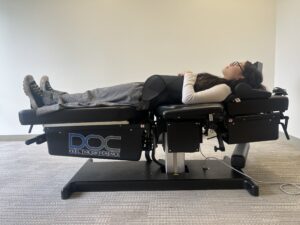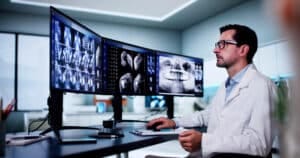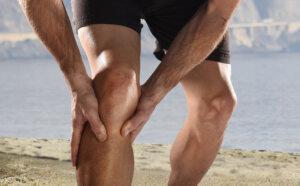The myofascial release technique is a way of manipulating and restoring movement to tissues that surround your muscles called fascia. The Active Release Technique is arguably the most advanced and effective form of myofascial release pretty much ever created. The Active Release Technique is a well thought or packaged form of the Myofascial Release Technique, and It requires a lot more mastery and education, and studies to get the certificate. Beyond chiropractic school, students and doctors are required to take more hours and have more practice to be able to be Active Release Technique Doctors or ART Doctors.
How does the Myofascial release Technique work and what conditions can be cured?
The myofascial release technique is there to break up scar tissue or adhesions within the fascia. It really tends to help with disorders such as Temporal Mandibular Joint disorder or TMJ disorder, and Carpal Tunnel Syndrome. A lot of our at-home desk workers or computer workers and engineers are really familiar with Fibromyalgia and headaches. It could be migraines or tension headaches, but releasing the muscles at the right spot can help relieve chronic pain in different parts of the body.
How does the Active Release Technique work and what conditions can be cured?
The Active Release Technique or ART is more pinpoint myofascial release work, and it helps a slew of different types of conditions, including neck pain, low back pain, tension headaches, shin splints, and plantar fasciitis. It can also help with more uncommon conditions such as frozen shoulder pain and sciatic nerve pain.
Myofascial Release or Active Release Technique, which one is better for me?
It really, really depends on the type of condition that a patient may present with and how specific it is to where their pain points are, and if they have any referral pain points. The doctor will do a thorough examination to determine if the Myofascial Release Technique or Active Release Technique is better for you.
Want to learn more? We think you’ll also enjoy these:
What are the benefits of Myofascial Release and Active Release Technique:
The benefits are similar in the fact that it will help increase the range of motion. It will help to take down your inflammation levels as well as help you get back into the activities that you are seeking to do. The other great benefit of both the active release technique and myofascial release technique is that it prevents re-injury. So opening up the joint, breaking up the scar tissue, or the myofascial adhesions can help increase that range of motion.
Hence you can use that joint fully. So that way we’re not going to cause another injury or a re-injury.
To get to the root cause of pain and discomfort, schedule an initial consultation, including a comprehensive evaluation and first treatment.
When should you not use the myofascial release technique or active release technique?
The Active Release Technique is a soft tissue method that focuses on relieving tension via the removal of adhesions, which can develop in tissues as a result of overload or repetitive stress injuries or RSI.
Which types of conditions should not be using these techniques?
That would be any sort of malignancy, aneurysm, tumors if you have pretty severe rheumatoid arthritis as well as advanced diabetes, or any sort of osteoporosis.
Use of Myofascial Release Technique and Active Release Technique at Truspine clinic:
At our San Francisco clinic, we practice both Myofascial Release Technique as well as the Active Release Technique. The providers are certified in providing both of these techniques and so you can rest assured. You’ll get the best possible treatment that is going to be tailored to what you need and your condition at our San Francisco clinic.
What is the best way to prepare for the Active Release Technique?
At our clinic, we usually recommend that patients wear loose clothing or expose the area that needs to be treated. So that way our providers can get a more hands-on approach to treating you quickly and effectively to get your pain levels down.
How much does the Active Release Technique cost? How long does it take to get better?
Well, in terms of length of time depends on how long you’ve had the condition and how chronic it is. And so the provider will be able to determine that at your first visit or consultation. The cost of the treatment does depend on what areas need to work on. The costs are very standard and very competitive compared to other clinics in the San Francisco area.
Final Words
Do you or a loved one have a condition that might benefit from the Active Release Technique? Give us a call at our San Francisco clinic (415) 421-1115 or visit us at 150 Lombard Street.
At our San Francisco clinic, we are experts in treating many different injuries with active release techniques. Get on our schedule with one of our trained providers so we can start.
To get to the root cause of pain and discomfort, schedule an initial consultation, including a comprehensive evaluation and first treatment.



